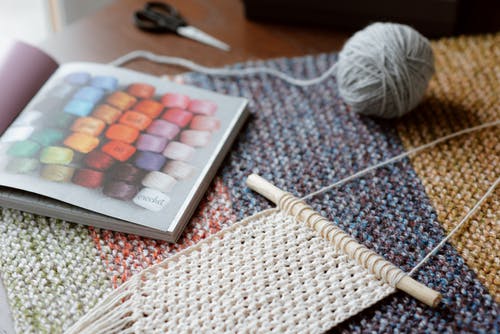
Why are Some Yarns Better Suited for Dyeing than Others?
- Serg
- 0
If you have ever been involved in working with yarn or are starting your journey, it is essential to know that various kinds of yarns are available. Each differs in quality, texture, and its appropriateness for different creative projects. A significant distinction to note is that certain types of yarn are better suited for dyeing than others. In this detailed explanation, let’s explore why this is the case.
Exploring Different Yarn Types
The starting point in understanding why certain yarns are better for dyeing lies in considering the different yarn types. The type of yarn largely influences how well it is able to absorb and hold the dye.
- Yarns derived from animals: Yarns like wool and silk are made from the fibers of animals. These yarns are highly receptive to the application of colors because of their naturally occurring protein structure.
- Synthetic yarns: Fibers like nylon and acrylic are artificial or man-made. These fibers might require different kinds of dyes or more specialized techniques to ensure that the color is absorbed and remains vibrant.
Seeing the yarn type and being aware of its compatibility with the dye in use is a necessary step when choosing the right kind of yarn for your dyeing project.
The Role of Yarn Materials in Dyeing
The way the tissue or material of the yarn is structured also plays a crucial role in how well the yarn can be dyed. For example:
- Plant-based yarns: Yarns that come from plants, such as cotton and linen, are known to absorb dye well because they have cellulose fibers.
- Blended yarns: Yarns that are created by combining two or more different kinds of fibers can have varied results when dyeing. This depends largely on the specific blend of materials that are used in the yarn.
Being familiar with the composition of the yarn you use would allow you to pick a dyeing technique that fits the yarn’s composition.
Building Your Yarn Collection
Having a rich collection of different kinds of yarns is a joy for anyone who loves textiles. Having a wide variety in your collection allows you to be well-prepared for any project. It also gives you an opportunity to get creative with colors and textures. Whether you’re a beginner or an expert, you can easily find yarns in Canada that would cater to all your artistic dreams. With a careful selection, you can be sure that all your creative projects have the best materials to ensure success.
Understanding Sport Yarns
A specific category of yarn, known as sport yarns, has a unique twist in its structure. These yarns are designed to create garments that are light in weight. This property makes sport yarns perfect for being incorporated into athletic wear. When you decide to buy sport yarns, you can expect a product that can handle the vigor of an active lifestyle. Not only does it perform well under pressure, but it also offers a color palette and touch experience unique to the world of yarn.
Role of Yarn Dyers
The color and vibrance of yarn lean heavily on dyers. A professional yarn dyer uses various techniques to introduce vibrant, lasting colors to the yarn. These professionals keep in consideration the type of yarn as well as the materials. They also pay attention to the outcome they desire. Good quality dyers not only employ dyes that are safe and non-harmful to nature, they also take care that the yarn keeps its original properties.
Differences Between Natural and Dyed Yarns
Choosing between natural or dyed yarns comes down to personal choice, project requirements, and your taste in aesthetics.
- Natural Yarns: As the name suggests, these come in colors that are naturally present in the animal or plant source. This gives your projects an authentic and earthy tone.
- Dyed Yarns: One of the major advantages of dyed yarns is the boundless spectrum of color that is available to you. You could make your designs stand out and look vivid with dyed yarns!
Ways to Buy Yarn
Purchasing yarn should not just consider the types of yarn but also where to buy them. Here are some insights:
- Specialty Yarn Shops: These could range from a local knitting shop to online ones. They generally offer a selection that is both unique and higher in quality than what you would find in an average hobby store.
- Yarn Crafting Communities: These communities often exchange yarns with each other. This can be an exciting and cost-effective method to add variety to your collection.
Going Behind the Scenes in the Yarn Manufacturing Process
A better learning of the Yarn Manufacturing process offers a deep appreciation for the complexity and skill that goes into producing the materials we take for granted. Every single skein of yarn is born from a process beginning with extracting fibers from plants or animals, going through the actual spinning process, and finishing with quality checking and establishing sustainability standards.
To End
To wrap it up, the understanding of how some yarns are better for dyeing compared to their counterparts opens up a world of possibilities. By familiarizing ourselves with these insights and exploring the vast array of options available, we not only become better artists but also consumers with more understanding. The world of yarn offers an extensive variety of color variations, crafting yarns, and yarn storage solutions, making it an immensely satisfying hobby or career option.


